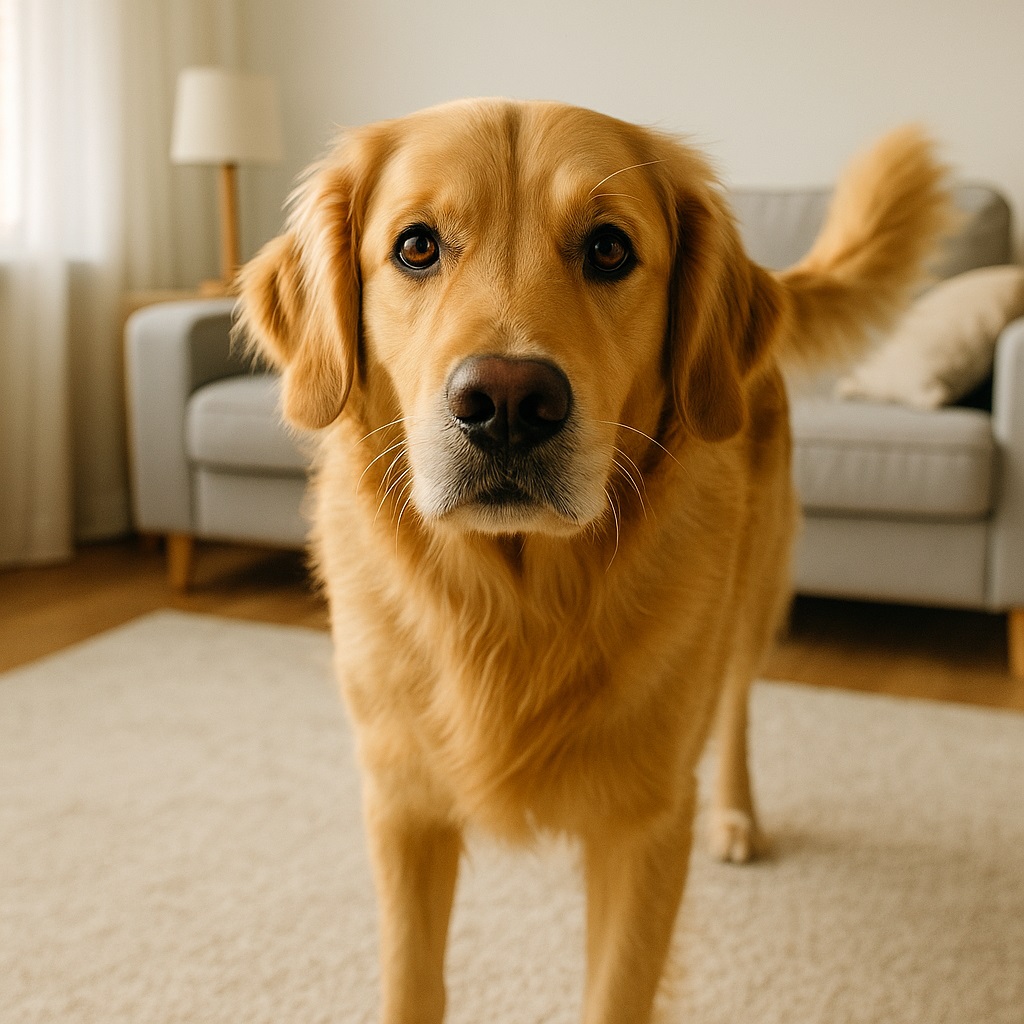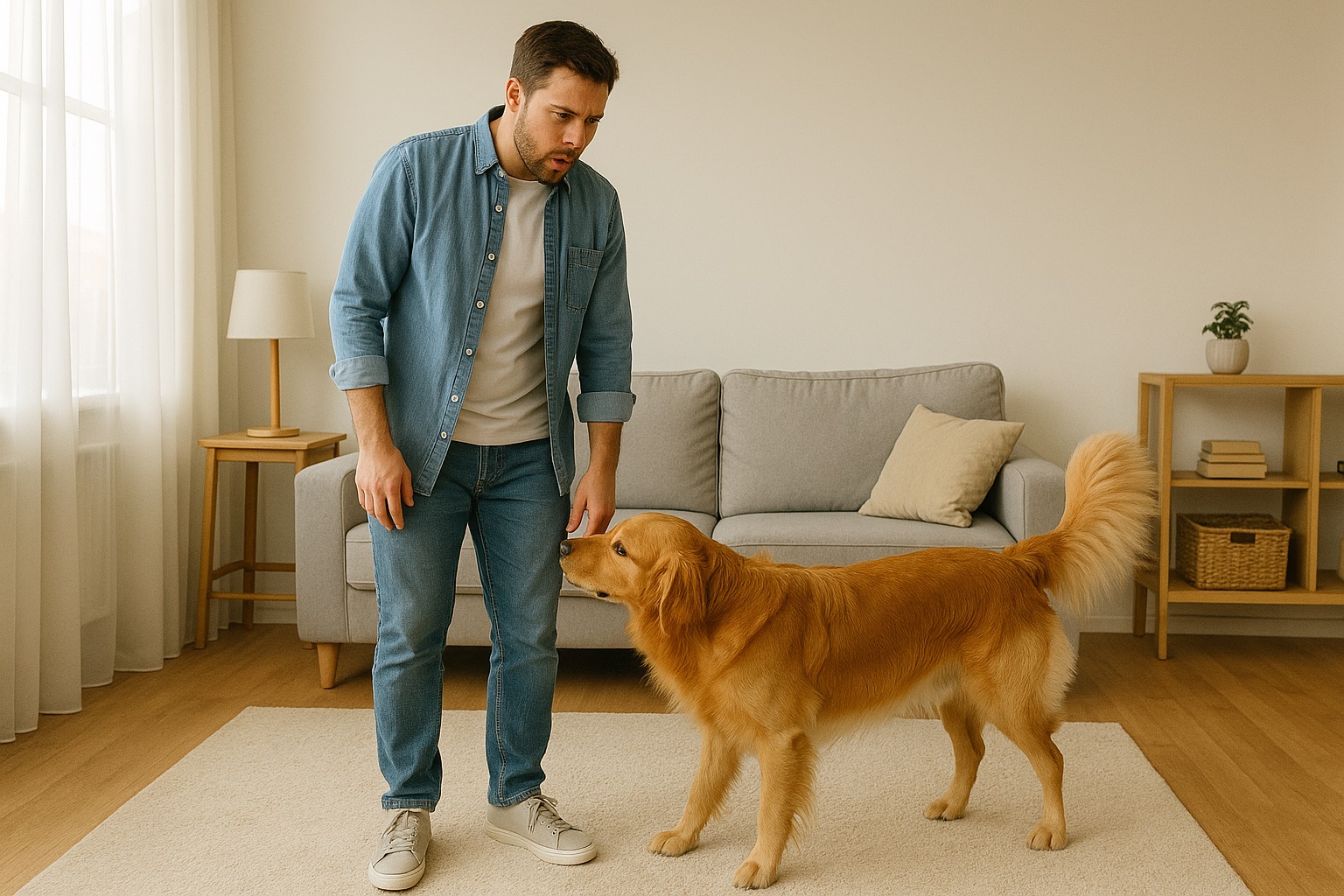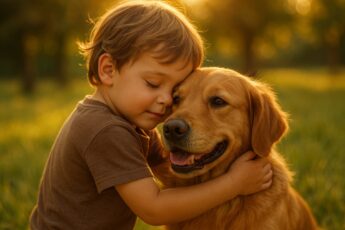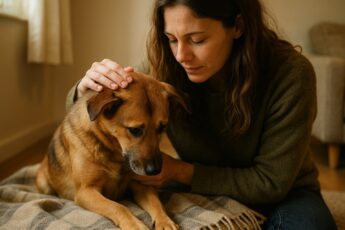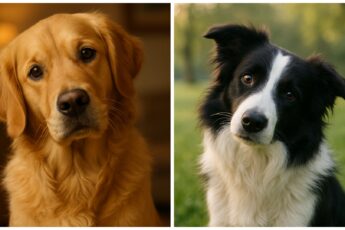How it started
It seemed harmless enough — the afternoon sunlight filtering through the living room, the happy wag of Buddy’s tail, and a new guest arriving at the door. But minutes later, the mood shifted. Buddy didn’t jump up, didn’t bark, didn’t beg for a treat. Instead, he approached the guest, sniffed the air, hesitated… and then zeroed in on one of the most awkward spots possible: the crotch.
She felt the gentle pressure of cold dog nose on her thigh. Her stomach sank. But her mind raced: Why is my dog doing this? What does he know that I don’t?
The anatomy of a dog’s curiosity
To understand Buddy’s behavior, we have to dive into the amazing world of a dog’s nose. Dogs have far more olfactory receptors than humans — in some breeds hundreds of millions compared to our mere few million.
They don’t just smell “good” or “bad.” They detect chemical signals, pheromones, sweat, and volatile compounds — everything from mood changes to hormonal shifts.
Those signals are strongest at certain spots: sweat glands, apocrine glands, and places where scent-rich secretions gather. For humans, one of the richest zones is the groin. That’s why Buddy targeted it.
What the sniff says
When Buddy pressed his nose to her legs, he wasn’t being disrespectful — he was gathering data.
In the animal world, sniffing the privates or rear end is like reading someone’s ID: age, gender, health status, even recent activity.
With humans, the conventions of polite society don’t apply to dogs. They will scan the groin region because:
It’s reachable without jumping.
It emits scents that reveal who the person is.
The dog’s brain treats humans almost as social partners to gather information about.
So what seemed like “uncouth” behavior is in fact deeply instinctive.
The family’s reaction
She tried to shove him away. “No, Buddy!” she whispered, mortified. The guest half-smiled, half-cringed. Her husband stepped in and redirected Buddy with a treat. Buddy paused, accepted the treat — and for a moment, everyone exhaled.
Over the next few days, she watched Buddy more closely: the sniff when a furnace filter changed, the sniff when a relative visited, the sniff in the park near other dogs. She realized his nose was never idle. It worked like a scanner — like a living journal of smells.
Fact-check corner
Dogs have many more scent receptors than humans and dedicate large parts of their brain to processing smells.
Apocrine sweat glands in humans cluster in the groin and armpit zones, creating scents dogs can detect.
Dogs use their sense of smell to “read” other dogs — and by extension sometimes humans — through scent cues.
While many claims suggest dogs can detect ovulation or exact illnesses via scent, these are not yet conclusively proven for humans.
So yes, Buddy’s behavior is rooted in science — albeit a branch of science where we’re still learning.
Why your dog does it to you
You’re part of his “pack,” and his curiosity isn’t limited to other dogs.
You’re upright and standing, making your groin reachable.
The smell signal is strongest there: sweat, secretions, clothing fabrics.
For a dog like Buddy, approaching a human’s crotch might simply feel like the most informative greeting in his world.
How to redirect the behavior (without shame)
She consulted a trainer and some experts, and learned a straightforward alternative to the awkward greeting. Instead of trying to shame Buddy:
Teach him a new behaviour — for example, sniff the palm of your hand on arrival.
Reward that behavior — sit, touch hand, get treat.
When guests arrive, ask Buddy to “sit” before he gets nose-deep.
Offer the alternate sniff — your open palm. Dogs can still gather scent info there.
It took days, then weeks, but the repeated redirection made a difference.
The turning point
One afternoon, a deliveryman knocked. Buddy wagged, jumped, then did the “hand sniff” politely. The deliveryman blinked — “That’s… new,” he said. She grinned. The embarrassing moment had become a proud one.
She realized: Buddy’s nose didn’t mean disrespect. It meant connection. It meant that he regarded her guest as part of his social world.
The secret revealed
So yes — the sniff at the crotch isn’t an invasion. It’s instinct. A dog’s way of saying: Tell me about yourself. Then, with knowledge, they decide how to proceed: friend, stranger, dominate, defer.
The behavior that felt awkward to her became the key to understanding Buddy’s mind.
And in the end: She froze as the family dog padded silently behind her… That moment wasn’t shame — it was the clash of human comfort zones and canine communication.
Conclusion
The next time your dog nudges or noses someone at the knees or groin – don’t jump. Instead, observe. Understand that for your pup, it’s communication, not intrusion. Redirect it if you must, train an alternate greeting, but respect the roots of the behavior.
After all, in a world built on smells, your dog is simply reading your biography one whiff at a time. And if Buddy ends up sniffing the deliveryman’s hand next time instead of crotch? That’s progress — with a wag and a treat.


